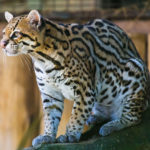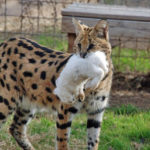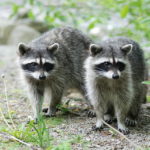The Naming of Cats
 This article is about the naming of cats and much more. Since falling from their sacred pedestal in Egypt cats have had a lot to put up with. No longer worshipped as a God (although there are still a few domestic Goddesses lying before various firesides) they’ve been burnt as witches’ familiars, eaten, used in vivisection and forced to eat tinned horse. The worst insult though are the names which their often doting owners bestow upon them.
This article is about the naming of cats and much more. Since falling from their sacred pedestal in Egypt cats have had a lot to put up with. No longer worshipped as a God (although there are still a few domestic Goddesses lying before various firesides) they’ve been burnt as witches’ familiars, eaten, used in vivisection and forced to eat tinned horse. The worst insult though are the names which their often doting owners bestow upon them.
It has to be said that a pet’s name often says more about the person choosing it then it does about the animal itself. Those with little imagination follow the tried and true paths peppering the feline world with Tigers, Puss’s and Blackies. Then there are those who choose to honor one of their idols which is why some poor tabbies are presently labouring under the title of Britney, Tiffany and Madonna. Worst still are the wits who decide they can be funny if they put their mind to it. The striped tabby that was named “Spot” comes to mind, as does the black and white cat named “Ginger”. But for hitting an all time low the person who named their cat “Splat”, just in case it was ever run over, wins hands down.
When you notice a cat in profound meditation The reason, I tell you, is always the same: His mind is engaged in a rapt contemplation Of the thought, of the thought, of the thought of his name: His ineffable effable Effanineffable Deep and inscrutable singular Name.
T.S. Eliot had the right idea by giving his creations wonderfully imaginative titles such as Rumpleteezer, Mungogerry, Grizabella and Old Deuteronomy but imagine calling “Rum Tum Tugger” down the street and you realize how unlikely they are on a practical level. Which is why his cats had three names: the common one the family called them, their more exotic title and the one that they “never would tell”.
The Naming of Cats in T S Eliot’s own voice
Literary giants never had any problems thinking up appropriate names for their pets although you sometimes wonder about their reasoning. The French author Colette had a beautiful Chartreuse cat called Saha; Mark Twain compiled intricate tongue twisters for his felines such as Apollinaris, Zoroaster, Blatherskite and Sour Mash. Beverly Nichols, the English writer, composer and renown cat lover gave his animals numbers as names as he felt these “acquired a subtle elegance of their own”. Victor Hugo named his solitary furry companion Gavroche whereas Ernest Hemmingway, man of action and great white hunter, went for quantity over quality sharing his home with never less than thirty cats although whether he was actually able to remember their names is cause for speculation!
Perhaps the solution on first being adopted by a cat is to wait and see as to what name they will choose. The gradual unfolding of their personality will soon point the way to an appropriate title. Remember not to save the exotic or spectacular for a feline of pedigree but give your common or garden moggy a name that will cause them to sit in long deep meditations on their mystery and utter superiority. And remember this scary thought: we know what we call our cats, but what do they call us?



























